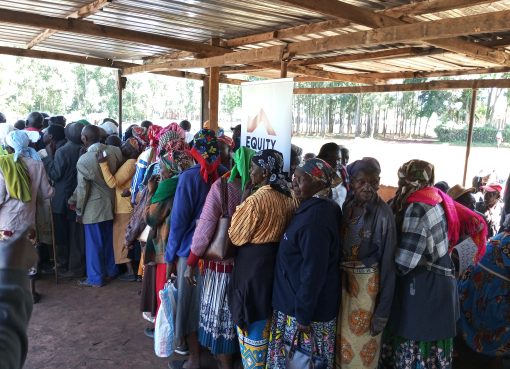Over 40,000 holes have been dug in Maasai Mau forest in areas where settlers have moved out following a 60-day eviction notice given to illegal settlers in the forest in August this year.
This is in preparation for a major tree planting exercise in the area to be launched by Environment and Forestry Cabinet Secretary, Keriako Tobiko on Friday November 1.
The government intends to plant over 100,000 trees in Maasai Mau on Friday and 10 million trees in entire Mau to reclaim it.
Speaking at Milele area in the forest on Tuesday, the Narok County Commissioner (CC), Samuel Kimiti said that currently, only 300 household are remaining with over 2500 households having moved out of the forest willingly following an eviction notice by the government.
Kimiti said out of the 300 households, 100 households have requested transportation from the government because of bad terrain and the current rains which have rendered the roads impassable.
“We thank the people for moving out smoothly which has minimized what could have arisen if they did not heed to the government orders,” he added.
The administrator reiterated that Mau is a major water catchment area which has been encroached thus affecting tourism downstream in the Mara river where wild beast migration known as the seventh wonder of the world has reduced therefore urging them to help conserve it.
“Mau is a natural treasure in Kenya, East Africa and worldwide which needs protection at all cost,” he said.
Kimiti called upon everyone and anyone in the country to bring seedlings for planting in the Mau or come for environmental tourism on Friday so that they can be part of the planting trees initiative.
The second phase of the water towers restoration of 7500 acres is estimated to affect over 3,360 households including an alleged 8,000 school going children. The department of education in Narok has confirmed that there are no candidates in Mau since none of the 15 schools earmarked for closure is registered.
During the first phase of the eviction in July last year, about 7,700 people were evicted from the forest land which saw over 12,000 acres of the forest reclaimed. It was centered in Reiya group ranch while the second phase has Nkoben, Ilmotiok and Ololunga on the radar. The others are Enokishomi, Enoosokon, Nkaroni and Sisian.
The eviction attracted political undertones with leaders from the Maa and Kalenjin communities in bitter exchange. The Maa leaders wanted the evictions to go on while the Kalenjin leaders want it stopped terming it illegal and inhuman.
The Mau is the largest water tower in the country supporting millions of human life and wildlife in Kenya and beyond.
By Mabel Keya-Shikuku/Kevin Bogita



